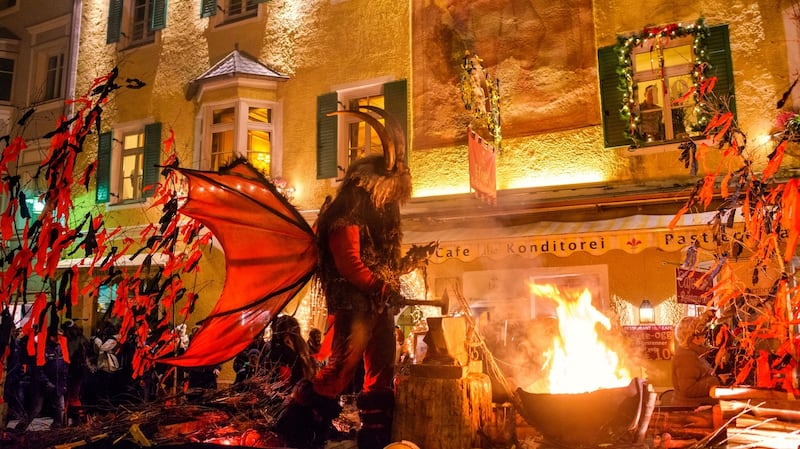Despite being a country of unusual traditions – suspended goat kings, hiding money in Halloween food, howling death maidens – we are bested almost every time by a geographical neighbour when it comes to bizarre folklore. This festive season, make like the Moroccans and get bazaar, and try a few of the below.
Japan: Eating KFC on Christmas Eve
Christmas isn't a widely celebrated holiday in Japan – just 1 per cent of Japanese people are estimated to be Christian – and yet a bucket of KFC Christmas Chicken is the popular meal on December 24th. According to the BBC, 3.6 million families celebrated this way in 2016. It all began with a 1974 marketing campaign – Kurisumasu ni wa kentakkii (Kentucky for Christmas). According to Smithsonian, when a group of foreigners couldn't find Christmas turkey and opted for KFC instead, the company saw it as a fabulous marketing opportunity and advertised its first Christmas meal – chicken and wine for the equivalent of $10, which, Smithsonian notes, was rather pricey for the mid-70s. These days, the Christmas dinner includes cake and champagne, and costs roughly $40. Many people order their meals far in advance to avoid queues; those who forget can end up waiting for as long as two hours.
Catalonia: Caganer, the defecating Christmas man
A regular figure in Catalan nativity scenes, the caganer is a bare-bottomed man with his trousers around his knees as he bends over a toilet. Typically, he is clothed in a white shirt and barretina, a traditional Catalan hat. Caganer literally means "sh**ter" in Catalan, and no one is certain of his significance, though one theory is that he represents good luck and the wish for a prosperous new year, since the act could be construed as the fertilisation of the earth.

Austria and German-speaking Alpine regions: Krampus, the Christmas devil
A personal favourite of mine when it comes to disturbing Christmas traditions is Krampus, who is pictured as a crotchety demon, bearing teeth, ringed horns and third-degree burns. From the nation that brought you schadenfreude, Krampus is a part-demon-part-goat devil-like figure with origins in pagan celebrations of the winter solstice. He appears on Christmas cards throughout Austria, and enjoys a long-held place in the country's holiday traditions, threatening children into submission. Sehr gut.
Guatemala: La Quema del Diablo
While this may not sound too dissimilar to an Irish Christmas preparation, in Guatemala locals believe that the devil and other evil spirits live in the dark, dirty corners of your home. And according to Kim and Aggie, they're not wrong. Therefore, they spend the week before Christmas sweeping up, collecting rubbish and then piling everything in a huge heap outside. Finally, an effigy of the devil is placed on top and the whole thing is set on fire. It's called La Quema del Diablo, the Burning of the Devil, and the idea for Guatemalans is to burn all the bad from the previous year and start a new year from out of the ashes. Just make sure the council doesn't catch you.
Venezuela: Get yer skates on
In the Venezuelan capital of Caracas, swathes of city dwellers make their way to mass on roller skates every year on Christmas morning. The tradition is now so well-established that many of the city's streets are closed to traffic from 8am on the day, so that the skating congregation can get to church safely. It's even said that children will sleep with one lace from their skates tied around their toe, the other skate dangling from the window so that their friends and scorned siblings can wake them up with a friendly/roaring tug on the lace.
South Africa: Fried caterpillars
Forget your ham and spuds, down in South Africa it's all about grub. And while fried caterpillars on Christmas may seem among the most demented on the list, they're actually fancy caterpillars – pine tree emperor moths, or Christmas caterpillar – you'll find on South African plates, covered in festive hues to boot. They say that those who eat them should expect a little extra luck in the coming year.








